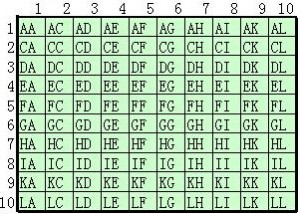Since biological research has attracted increasing concerns in the medical community, current biological research tools also require attention, such as peptide library design. Generally speaking, a peptide library is a systematic combination of a large number of different peptides, which indicates a fact that peptide library design is a tool for the wide use in protein-related studies.
 It’s common to know peptide libraries are in ever increasing demand due to the expanding interest in peptide drug and vaccine development. Actually, peptide library can be synthesized on solid phase, which might be made as flat surface or beads. While as for the applicable peptide library design, it’s a little different. Peptide Library Design, as an available biological research tool, can provide a powerful tool for drug design, protein-protein interactions, and other biochemical as well as pharmaceutical applications. In addition, it is widely used in related biological research for screening large numbers of peptides in the needs for the few but critical bioactive peptides.
It’s common to know peptide libraries are in ever increasing demand due to the expanding interest in peptide drug and vaccine development. Actually, peptide library can be synthesized on solid phase, which might be made as flat surface or beads. While as for the applicable peptide library design, it’s a little different. Peptide Library Design, as an available biological research tool, can provide a powerful tool for drug design, protein-protein interactions, and other biochemical as well as pharmaceutical applications. In addition, it is widely used in related biological research for screening large numbers of peptides in the needs for the few but critical bioactive peptides.
Taking Creative Peptides as an example, it’s a supplier of peptide library technology and has years of experience in designing and synthesizing custom peptide libraries. Its special library design can be helpful in guiding researchers for the purpose of trying to discover more amino acid residues. Clearly, peptide library design can be used in other relevant fields as well. For instance, the overlapping peptide library can be one of the kind. It is the most commonly used in many realms, such as continuous epitope mapping, which aims at generating a library of overlapping peptide sequences for specific length. Therefore, it is able to cover the entire native protein sequence. However, there is one point that should be payed enough attention, namely the appropriate peptide length, because it’s significant for the peptides applications, enabling the correct obtainment of necessary data.
Conventional peptide library design techniques have some limitations in the arrays, so modern design tool should try to improve the issue. Maybe further advance in biological research can help peptide library go forward without the problem of the location in discontinuous or non-linear binding sites of proteins.